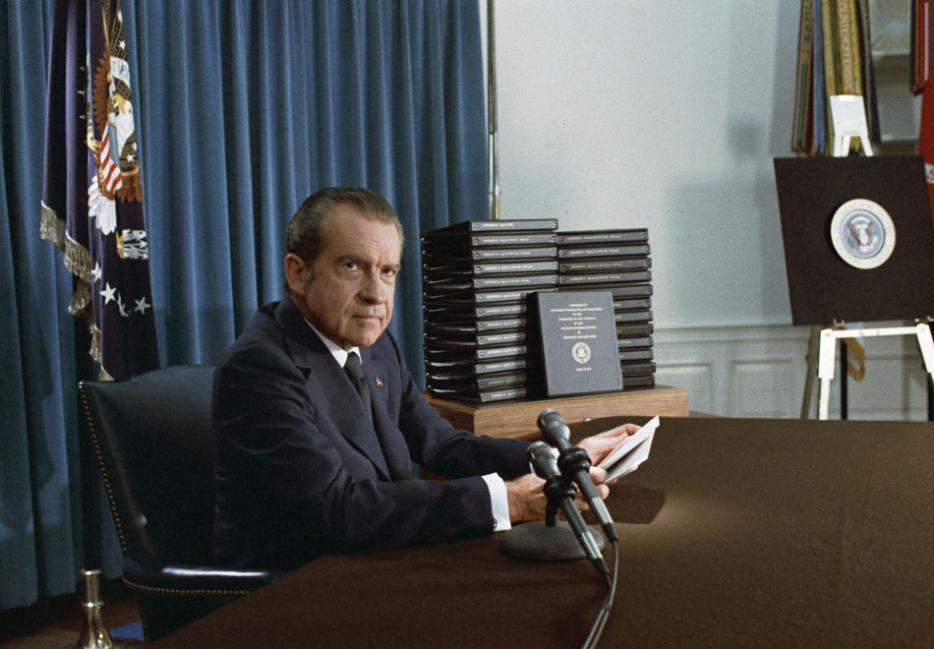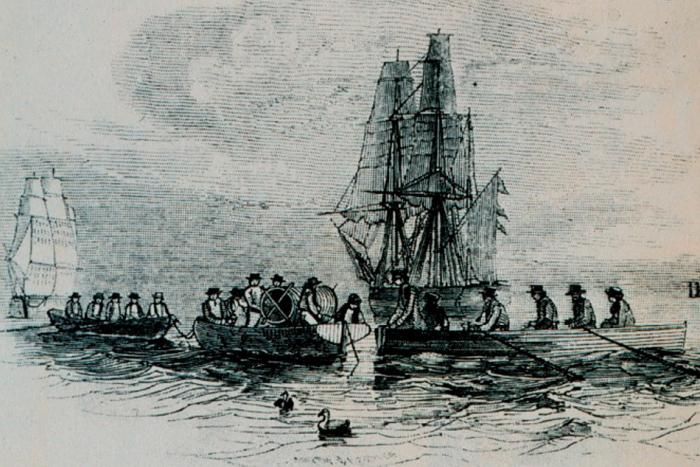Fashion robs from the past, as does politics. The smart designer (or candidate) waits for at least a generation to pass, at which point it’s safe to plunder even the worst mistakes of history and present them as fresh, exciting. This is the business plan of Urban Outfitters. It is also the reason why Rob Ford has found success in channeling Richard Nixon, the 37th President of the United States who was twice elected (handily) despite being a liar and a war criminal.
It’s not obvious, but the clues are there. Check that: some of the clues are obvious. They both sweat (or did sweat) on television. They were both caught on tape breaking the law, although only one lost his job as a result. They both have (or had) outspoken seconds-in-command whose job, in undercutting negative media attention, was to undercut the media.
“To penetrate the cacophony of seditious drivel emanating from the best-publicized clowns in our society and and their fans in the fourth estate, yes, my friends, to penetrate that drivel, we need a cry of alarm, not a whimper,” said Spiro Agnew, Nixon’s vice-president.
“The media is nasty,” said Doug Ford (July 2014, on CP24).
When things were at their worst, when it looked like their worlds were crumbling, Rob went to rehab. Nixon went to China. They are (or were) skilled at gaslighting, wherein the accused turns tables on the accuser, forcing him to question his reason or even his own sanity, as Nixon’s people did with Martha Mitchell who, when she piped up about Watergate in the early days of the scandal, was made to look as if she’d lost her mind. Meanwhile, on a radio talk show, when a caller asked if Rob had taken a picture with a drug dealer, he and Doug accused her of being a racist.
It’s a fun game of connect-the-dots, until you cut deeper and recognize the level of political sophistication in play. Nixon was, and Ford is, a master at creating the conditions for voter resentment and then proposing the means to its relief. As Rick Perlstein writes in Nixonland: The Rise of a President and the Fracturing of America, Nixon understood that middle-class Americans felt as condescended to by opinion makers, intellectuals, amoralists, and political snobs (meaning Democrats) as he did, and that as long as he could stoke the anger between real Americans and the elite, he’d succeed, and he did. “I have even suggested,” Perlstein writes, “that the demons that consumed him, the demons that led to Watergate, were part of a sincere desire to combat what he believed was truly evil—a battle with which many of the public in some sense identified, who embraced Nixon not despite the anxieties and dreads that drove him, but because of them.”
Nixon had worked it out long before he’d launched his political career, as a student at Whittier College in Los Angeles County, where he was smart enough for the debating team but too small for the football team. Instead of fraternities, the college had literary societies which attracted top performers. One group, the Franklins, refused his admittance on account of his modest roots: his family wasn’t prominent enough. So Nixon formed a splinter group called the Orthogonians, for the mettlesome outcasts like him who’d been snubbed by the upperclassmen and jocks. From that point on, Perlstein says, Nixon saw the world as a pitched battle between Franklins and Orthogonians: the entitled elite versus the common man. He knew which side he was on.
They both sweat (or did sweat) on television. They were both caught on tape breaking the law, although only one lost his job as a result.
Alger Hiss, the U.S. State Department official accused of being a Communist spy (and whose conviction launched Nixon’s career) was a Franklin. The Kennedys were definitely Franklins. But the New York construction workers who beat up on spoiled hippies protesting the Vietnam War were Orthogonians, as were the middle-class housewives who thought civil rights had gone far enough, there was no need for African-American families to move into their neighbourhoods. These people knew Nixon was on their side, that he not only shared their anxieties but embodied them, and those who would force an end to American apartheid or a premature withdrawal from Vietnam were on the other. In two elections, in 1968 and 1972, Nixon sought not the Republican vote, nor the anti-Democratic vote, but the unhappy, disgruntled, and yet oddly hopeful Orthogonian vote. He called them the “silent majority.”
They elected him, twice.
He rewarded them by prolonging the war in Vietnam and fudging on civil rights: desegregation of American schools was a good idea on paper but shouldn’t be rushed, and anyway it was a matter for the states. On the big issues you were either with Nixon (keep things as they were, only more so) or you were with the enemy. Viet Cong or the batik’d domestic radical handing out pamphlets: they were all the same. In other words, he could only maintain an us-and-them America as long as any hope of consensus was shelved. He needed the silent majority to be as unfailingly pissed off and confused by the modern world as he was.
The tragic flaw in his scheme, the one he failed to see, was that the longer he stayed in power the more he came to represent just another monolithic, political establishment: with time and power, the Orthogonian becomes a different kind of Franklin. When a new, reform class of politically engaged voters emerged (students, African-American activists, feminists, working people who paid attention) the ground began to crumble beneath him, and the only way out for Nixon was to cheat: the Committee to Re-Elect the President dispatched guerrilla teams, the “ratfuckers” they were called, to disrupt opposition campaigns, break into Democratic party headquarters in the Watergate hotel and bug the phones, clumsily as it turned out.
“Nixon will be remembered as a classic case of a smart man shitting in his own nest,” wrote Hunter S. Thompson in Rolling Stone, when the 37th President died in 1994. “But he also shit in our nests, and that was the crime that history will burn on his memory like a brand… Richard Nixon broke the heart of the American dream.” But if that's so, America got over it. Nixon had a winning formula: find wedge issues and feed them to a hungry populace which likes being disgruntled because it gives them an identity. The Tea Party, too, speaks to a mythical silent majority that would deny health benefits to certain Americans, and the right to vote to others, based on their resentment of any special treatment for those who haven’t earned it: handouts from do-gooder Franklins. And as per Nixon’s example, the Tea Party thrives by stoking that resentment. It’s a choking coal fire that never goes out. “How did Nixonland end?” Perlstein writes. “It hasn’t ended.”
It carries on in Toronto too. Rob Ford is not a moron, but a canny Nixon-style Orthogonian with a libertarian twist, cultivating resentment in a silent majority called Ford Nation. He’s running against a couple of Franklins. If he wins again (cover your nests) every conservative political machine on the planet will want to figure out how he pulled it off. They only have to look to the United States in ’68 and ’72, or read Nixonland, for the blueprint.






